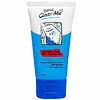What's inside
What's inside
 Key Ingredients
Key Ingredients

 Benefits
Benefits

 Concerns
Concerns

 Ingredients Side-by-side
Ingredients Side-by-side

Water
Skin ConditioningHydrogenated Polyisobutene
EmollientAlcohol
AntimicrobialEthylhexyl Methoxycinnamate
UV AbsorberPropanediol
SolventHydroxyethyl Acrylate/Sodium Acryloyldimethyl Taurate Copolymer
Emulsion StabilisingTitanium Dioxide
Cosmetic ColorantSalicylic Acid
MaskingButyl Methoxydibenzoylmethane
UV AbsorberZinc Gluconate
Skin ConditioningPhenoxyethanol
PreservativeAmylopectin
Dextrin
AbsorbentOctocrylene
UV AbsorberButylene Glycol
HumectantPolyacrylate Crosspolymer-6
Emulsion StabilisingXanthan Gum
EmulsifyingSilica
AbrasiveChlorphenesin
AntimicrobialBHT
AntioxidantBisabolol
MaskingDimethicone
EmollientLecithin
EmollientWater, Hydrogenated Polyisobutene, Alcohol, Ethylhexyl Methoxycinnamate, Propanediol, Hydroxyethyl Acrylate/Sodium Acryloyldimethyl Taurate Copolymer, Titanium Dioxide, Salicylic Acid, Butyl Methoxydibenzoylmethane, Zinc Gluconate, Phenoxyethanol, Amylopectin, Dextrin, Octocrylene, Butylene Glycol, Polyacrylate Crosspolymer-6, Xanthan Gum, Silica, Chlorphenesin, BHT, Bisabolol, Dimethicone, Lecithin
Water
Skin ConditioningNiacinamide
SmoothingGlycerin
HumectantPhenyl Trimethicone
Skin ConditioningBetaine
HumectantC13-15 Alkane
SolventCaprylic/Capric Triglyceride
MaskingDicaprylyl Carbonate
EmollientButylene Glycol
HumectantDimethicone
EmollientPhenoxyethanol
PreservativeXylitylglucoside
HumectantAllantoin
Skin ConditioningAnhydroxylitol
HumectantAcrylamide/Sodium Acryloyldimethyltaurate Copolymer
Emulsion StabilisingPolyacrylate Crosspolymer-11
Emulsion StabilisingXylitol
HumectantC13-14 Isoparaffin
EmollientCentella Asiatica Extract
CleansingDisodium EDTA
Ethylhexylglycerin
Skin ConditioningLaureth-7
EmulsifyingGlucose
HumectantXanthan Gum
EmulsifyingPolygonum Cuspidatum Root Extract
AntioxidantScutellaria Baicalensis Root Extract
AstringentCamellia Sinensis Leaf Extract
AntimicrobialGlycyrrhiza Glabra Root Extract
BleachingSodium Hyaluronate
HumectantMelia Azadirachta Leaf Extract
Skin ConditioningOpuntia Ficus-Indica Stem Extract
Skin ConditioningChamomilla Recutita Flower Extract
MaskingRosmarinus Officinalis Leaf Extract
AntimicrobialT-Butyl Alcohol
PerfumingMelia Azadirachta Flower Extract
Skin ConditioningDisodium Phosphate
BufferingWater, Niacinamide, Glycerin, Phenyl Trimethicone, Betaine, C13-15 Alkane, Caprylic/Capric Triglyceride, Dicaprylyl Carbonate, Butylene Glycol, Dimethicone, Phenoxyethanol, Xylitylglucoside, Allantoin, Anhydroxylitol, Acrylamide/Sodium Acryloyldimethyltaurate Copolymer, Polyacrylate Crosspolymer-11, Xylitol, C13-14 Isoparaffin, Centella Asiatica Extract, Disodium EDTA, Ethylhexylglycerin, Laureth-7, Glucose, Xanthan Gum, Polygonum Cuspidatum Root Extract, Scutellaria Baicalensis Root Extract, Camellia Sinensis Leaf Extract, Glycyrrhiza Glabra Root Extract, Sodium Hyaluronate, Melia Azadirachta Leaf Extract, Opuntia Ficus-Indica Stem Extract, Chamomilla Recutita Flower Extract, Rosmarinus Officinalis Leaf Extract, T-Butyl Alcohol, Melia Azadirachta Flower Extract, Disodium Phosphate
Ingredients Explained
These ingredients are found in both products.
Ingredients higher up in an ingredient list are typically present in a larger amount.
Butylene Glycol (or BG) is used within cosmetic products for a few different reasons:
Overall, Butylene Glycol is a safe and well-rounded ingredient that works well with other ingredients.
Though this ingredient works well with most skin types, some people with sensitive skin may experience a reaction such as allergic rashes, closed comedones, or itchiness.
Learn more about Butylene GlycolDimethicone is a type of synthetic silicone created from natural materials such as quartz.
What it does:
Dimethicone comes in different viscosities:
Depending on the viscosity, dimethicone has different properties.
Ingredients lists don't always show which type is used, so we recommend reaching out to the brand if you have questions about the viscosity.
This ingredient is unlikely to cause irritation because it does not get absorbed into skin. However, people with silicone allergies should be careful about using this ingredient.
Note: Dimethicone may contribute to pilling. This is because it is not oil or water soluble, so pilling may occur when layered with products. When mixed with heavy oils in a formula, the outcome is also quite greasy.
Learn more about DimethiconePhenoxyethanol is a preservative that has germicide, antimicrobial, and aromatic properties. Studies show that phenoxyethanol can prevent microbial growth. By itself, it has a scent that is similar to that of a rose.
It's often used in formulations along with Caprylyl Glycol to preserve the shelf life of products.
Water. It's the most common cosmetic ingredient of all. You'll usually see it at the top of ingredient lists, meaning that it makes up the largest part of the product.
So why is it so popular? Water most often acts as a solvent - this means that it helps dissolve other ingredients into the formulation.
You'll also recognize water as that liquid we all need to stay alive. If you see this, drink a glass of water. Stay hydrated!
Learn more about WaterXanthan gum is used as a stabilizer and thickener within cosmetic products. It helps give products a sticky, thick feeling - preventing them from being too runny.
On the technical side of things, xanthan gum is a polysaccharide - a combination consisting of multiple sugar molecules bonded together.
Xanthan gum is a pretty common and great ingredient. It is a natural, non-toxic, non-irritating ingredient that is also commonly used in food products.
Learn more about Xanthan Gum